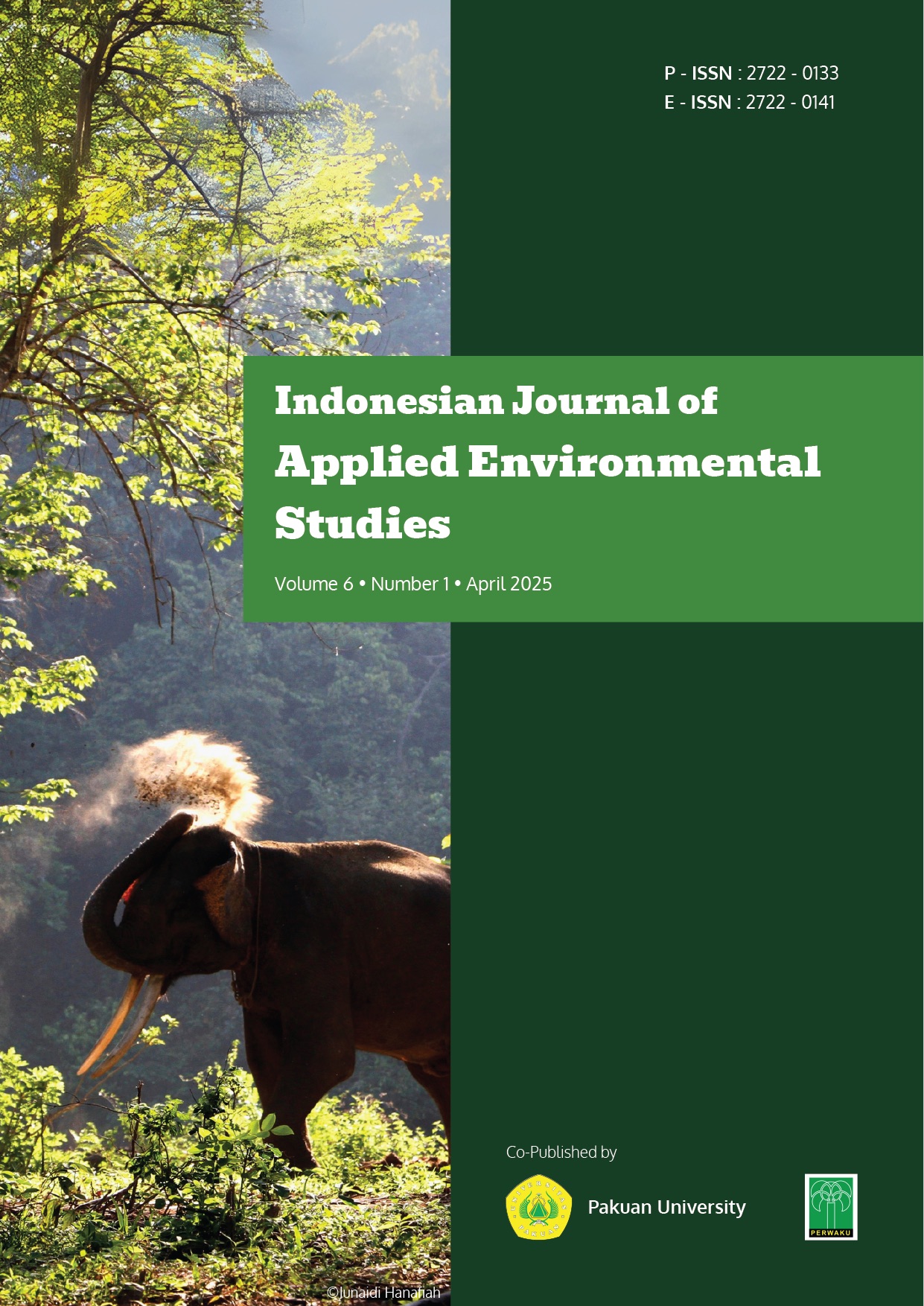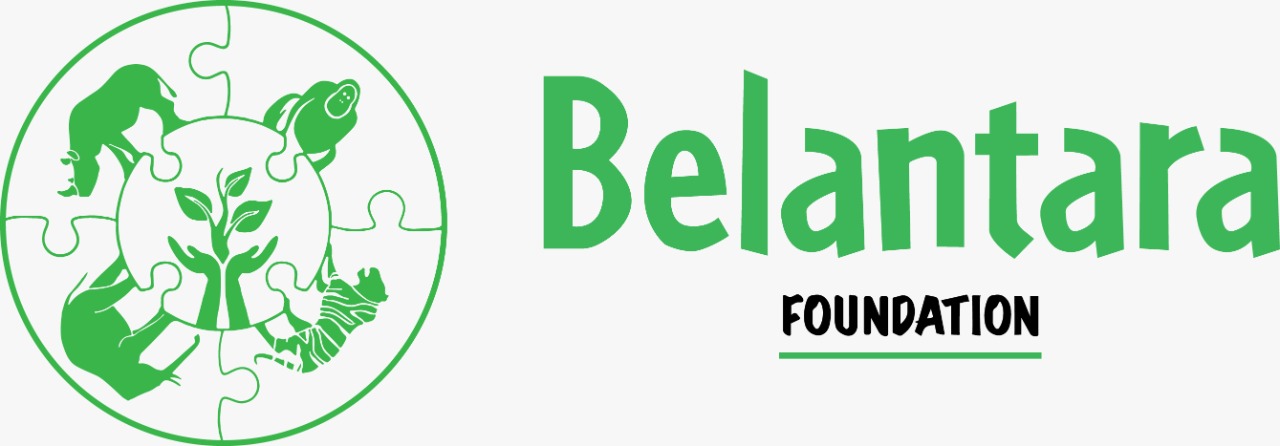Empowering the Planet: The 2025 Earth Day Resolution
DOI:
https://doi.org/10.33751/injast.v6i1.9Keywords:
Clean energy, climate change, Earth Day, fossil fuels, GHG emissions, sustainabilityAbstract
Earth is the only known planet that supports life, including humanity. Despite seeing ourselves as the most intelligent species in our world, human activities are accelerating the Earth toward irreversible environmental degradation. The consumption of fossil fuels to satisfy our growing demands has led to unprecedented greenhouse gas emissions, pushing the planet toward a potential sixth mass extinction. The rapid rise in carbon dioxide and global temperatures threatens the survival of numerous species, including humanity. Without urgent, collective action to reduce emissions and implement adaptation and mitigation strategies, Earth's ecosystems face catastrophic disruption. Every year on April 22, over one billion people celebrate Earth Day to raise awareness and renew our commitment to protecting our planet. In 2025, under the theme "Our Power, Our Planet," we are reminded of our collective ability to drive transformative change. The coming decades will test human wisdom and willpower. Immediate and sustained action is essential to transition to clean energy, protect biodiversity, and ensure a sustainable future for all.
References
Ahmad, Z., Khan, S. M., Ullah, A., Afza, R., & Yang, J. (2025). Source apportionment, carcinogenic and non-carcinogenic risks assessment of soil heavy metals in marble waste polluted environment; role of vegetation in risk mitigation. Journal of Hazardous Materials Advances, 18: 100689.
Ahmad, Z., Khan, S. M., Page, S. E., Balzter, H., Ullah, A., Ali, S., & Mukhamezhanova, A. S. (2023). Environmental sustainability and resilience in a polluted ecosystem via phytoremediation of heavy metals and plant physiological adaptations. Journal of Cleaner Production, 385: 135733.
Ahmad, Z., Khan, S. M., & Page, S. (2021). Politics of the natural vegetation to balance the hazardous level of elements in marble polluted ecosystem through phytoremediation and physiological responses. Journal of Hazardous Materials, 414: 125451.
Ali, S., Khan, S. M., Ahmad, Z., Siddiq, Z., Ullah, A., Yoo, S., & Raposo, A. (2023). Carbon sequestration potential of different forest types in Pakistan and its role in regulating services for public health. Frontiers in Public Health, 10: 1064586.
Ali, S., Khan, S. M., Siddiq, Z., Ahmad, Z., Ahmad, K. S., Abdullah, A., & Abd_Allah, E. F. (2022). Carbon sequestration potential of reserve forests present in the protected Margalla Hills National Park. Journal of King Saud University-Science, 34(4): 101978.
Arshad, M. (2017). Clean and Sustainable Energy Technologies (pp. 73–89). Academic Press. https://doi.org/10.1016/B978-0-12-805423-9.00003-X
Bourland, D., & Hernandez, Y. (2014). Cleaner energy and health: household, local and global benefits. Community Development Investment Review, 01: 023–026. https://ideas.repec.org/a/fip/fedfcr/00029.html
BP Energy Outlook (2024). BP Energy Outlook 2024 Edition. Website: https://www.bp.com/content/dam/bp/business-sites/en/global/corporate/pdfs/energy-economics/energy-outlook/bp-energy-outlook-2024.pdf
Bess, M.D. (2022). Fossil Fuels and Climate Change. In: Planet in Peril: Humanity’s Four Greatest Challenges and How We Can Overcome Them. Cambridge University Press; 2022:27-35. https://doi.org/10.1017/9781009160315.002
Cohen, S. A. (2015). What Is Stopping the Renewable Energy Transformation and What Can the US Government Do. Academic Commons, 82(3): 689–710. https://doi.org/10.7916/D8XG9R8B
Ejaz, U., Khan, S. M., Shah, S. F. A., Khalid, N., Jehangir, S., Rizvi, Z. F., & Svenning, J. C. (2025). Integrative data-driven analytics for assessing ecological and human health risks of soil heavy metal contamination. Journal of Hazardous Materials Advances, 17: 100596.
Emberson, L., He, K., Rockström, J., Amann, M., Barron, J., Correll, R., Feresu, S., Haeuber, R., Hicks, K., Johnson, F. X., Karlqvist, A., Klimont, Z., Mylvakanam, I., Song, W. W., Vallack, H. W., Zhang, Q., & Jäger, J. (2012). Global Energy Assessment (GEA): Energy and Environment (pp. 191–254). Cambridge University Press. https://doi.org/10.1017/CBO9780511793677.009
Gul, I., Khan, S. M., Nawaz, U., Haq, Z. U., Abdullah, Ahmad, Z., & Iqbal, M. (2022). Techniques used in the process of biodiesel production and its merits and demerits from a historical perspective. In: Nandabalan, Y.K., Garg, V.K., Labhsetwar, N.K., Singh, A. (eds) Zero Waste Biorefinery. Energy, Environment, and Sustainability. Springer, Singapore. Pp. 535-556. https://doi.org/10.1007/978-981-16-8682-5_19
International Energy Agency (2024). Global Energy and Climate Model Documentation – 2024. IEA Publications. Website: www.iea.org
Jacobson MZ. (2023). Timeline and Policies Needed to Transition . In: No Miracles Needed: How Today’s Technology Can Save Our Climate and Clean Our Air. Cambridge University Press eBooks. Pp. 318–340. https://doi.org/10.1017/9781009249553.016
Khan, K. U., Shah, M., Ahmad, H., Khan, S. M., Rahman, I. U., Iqbal, Z., & Aldubise, A. (2018). Exploration and local utilization of medicinal vegetation naturally grown in the Deusai plateau of Gilgit, Pakistan. Saudi Journal of Biological Sciences, 25(2): 326-331.
Liu, H.-Y., Skandalos, N., Braslina, L., Kapsalis, V., & Karamanis, D. (2023). Integrating Solar Energy and Nature-Based Solutions for Climate-Neutral Urban Environments. Solar, 3(3): 382-415. https://doi.org/10.3390/solar3030022
Manan, F., Khan, S. M., Ahmad, Z., Kamran, S., Haq, Z. U., Abid, F., ... & Abdullah. (2020). Environmental determinants of plant associations and evaluation of the conservation status of Parrotiopsis jacquemontiana in Dir, the Hindu Kush Range of Mountains. Tropical Ecology, 61: 509-526.
Michaelides, E. E. (2012). Environmental and Ecological Effects of Energy Production and Consumption (pp. 33–63). Springer Berlin Heidelberg. https://doi.org/10.1007/978-3-642-20951-2_2
NOAA (2025). National Oceanic and Atmospheric Administration (NOAA) Global Monitoring Laboratory Trends in CO2 https://gml.noaa.gov/ccgg/trends/
Obuseh, E., Eyenubo, O. J., Alele, J., Okpare, A., & Oghogho, I. (2025). A Systematic Review of Barriers to Renewable Energy Integration and Adoption. Journal of Asian Energy Studies, 9: 26–45. https://doi.org/10.24112/jaes.090002
Ozturk, M., Khan, S. M., Altay, V., Efe, R., Egamberdieva, D., & Khassanov, F. (2022). Biodiversity, conservation and sustainability in Asia: Volume II: prospects and challenges in South and Middle Asia. Springer Nature Switzerland AG, 2021b. DOI, 10, 978-3.
Priatna, D., Baruah. C., & Sharma, D. K. (2023). Better Management Practices (BMP) towards a Human-Wildlife Co-existence. Asian Journal of Conservation Biology, 12 (2): 177-178. https://doi.org/10.53562/ajcb.EN00024
Priatna, D., & Khan, S. M. (2024). The importance of education and role of educational institutions in climate change mitigation and achieving UN SDG 13 “Climate Action”. Indonesian Journal of Applied Environmental Studies, 5(1): 1-5. DOI: 10.33751/injast.v5i1.10559
Priatna, D., & Monk, K. A. (2022). The role of the academic community in combating wildlife trafficking. Indonesian Journal of Applied Environmental Studies, 3(2): 85-91. DOI: 10.33751/injast.v3i2.6302
Priatna, D., & Monk, K. A. (2023a). Climate change and its implications on wildlife conservation. Indonesian Journal of Applied Environmental Studies, 4(2): 64-66. DOI: 10.33751/injast.v4i2.9661
Priatna, D., & Monk, K. A. (2023b). Progress, Challenges, and the Nexus of Research and Impact - the importance of technology in biodiversity conservation in Indonesia. Indonesian Journal of Applied Environmental Studies, 4(1): 3-9. DOI: 10.33751/injast.v4i1.8778
Qamar, A., Ali, S., & Khan, S. M. (2024). Elaborating solutions for bringing sustainability in the air-polluted urban environment via use of plants' anticipated performance and air pollution tolerance indices. Urban Climate, 58: 102156.
Rahman, A., Khan, S. M., Ahmad, Z., Alamri, S., Hashem, M., Ilyas, M., & Ali, S. (2021). Impact of multiple environmental factors on species abundance in various forest layers using an integrative modeling approach. Global Ecology and Conservation, 29: e01712.
Ramadan, B. S., Budihardjo, M. A., Puspita, A. S., Kurniawan, A., Widiyanti, A., Waskito, A., & Hanaseta, E. (2024). Successful energy transition—Case study in Indonesia (pp. 391–408). Elsevier BV. https://doi.org/10.1016/b978-0-443-13607-8.00014-6
Rana, M., Khan, S. M., Ali, S., Khalid, A., & Ahmad, Z. (2024). Carbon credit, trading, green economy, and clean development mechanisms. In: Agroforestry for Carbon and Ecosystem Management (pp. 147-159). Academic Press.
Ratna, T., Shakya, S.R. & Sharma, A. (2022). Energy Transitions : Trend, Drivers, Barriers, and Policies In: M. Asif (ed). Handbook of Energy Transitions. CRC Press eBooks, pp. 21–40. https://doi.org/10.1201/9781003315353-3
Roehrl, R. A. (2016). Clean energy for sustainable development. Pp. 81–113. https://doi.org/10.18356/7B9BB2C1-EN
Ross, K. E., & Piketh, S. (2005). The Implications of Fossil Fuel Combustion for Climate Change. MRS Proceedings, 885(1): 1–12. https://doi.org/10.1557/PROC-0885-A01-01
Soeder, D. J. (2021). Fossil Fuels and Climate Change (pp. 155–185). . In: Fracking and the Environment. Springer, Cham. https://doi.org/10.1007/978-3-030-59121-2_9
Stein, A. L. (2017). Breaking Energy Path Dependencies. Brooklyn Law Review, 82(2): 559. https://scholarship.law.ufl.edu/cgi/viewcontent.cgi?article=1804&context=facultypub
Teixidor-Toneu, I., Mattalia, G., Caillon, S., Abdullah, A., Fiser, Ž., Karlsen, P., Khan S. M., & Schunko, C. (2025). Stewardship underpins sustainable foraging. Trends in Ecology & Evolution. 40(4): 315-319. https://doi.org/10.1016/j.tree.2025.01.00
Ullah, T., Khan, S. M., Abdullah, A., Sulaiman, N., Ullah, A., Khan, M. S., & Pieroni, A. (2024). Bio-Cultural Diversity for Food Security: Traditional Wild Food Plants and Their Folk Cuisine in Lakki Marwat, Northwestern Pakistan. Diversity, 16(11): 684.
Yudiartono, Y., Santosa, J., Fitriana, I., Wijaya, P. T., Rahardjo, I., Wahid, L. O. M. A., Siregar, E. M., Hesty, N. W., Fithri, S. R., & Sugiyono, A. (2024). Renewable energy in sustainable cities: Challenges and opportunities by the case study of Nusantara Capital City (IKN). International Journal of Renewable Energy Development, 13(6), 1136–1148. https://doi.org/10.61435/ijred.2024.60390
Zaręba, A., Krzemińska, A., & Łach, J. (2017). Energy sustainable cities. From eco villages, eco districts towards zero carbon cities. E3S Web of Conferences, 22: 00199. https://doi.org/10.1051/E3SCONF/20172200199
Downloads
Published
How to Cite
Issue
Section
License
Copyright (c) 2025 Indonesian Journal of Applied Environmental Studies

This work is licensed under a Creative Commons Attribution-NonCommercial-ShareAlike 4.0 International License.


















